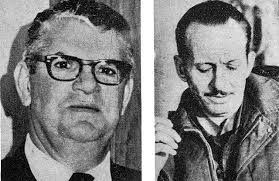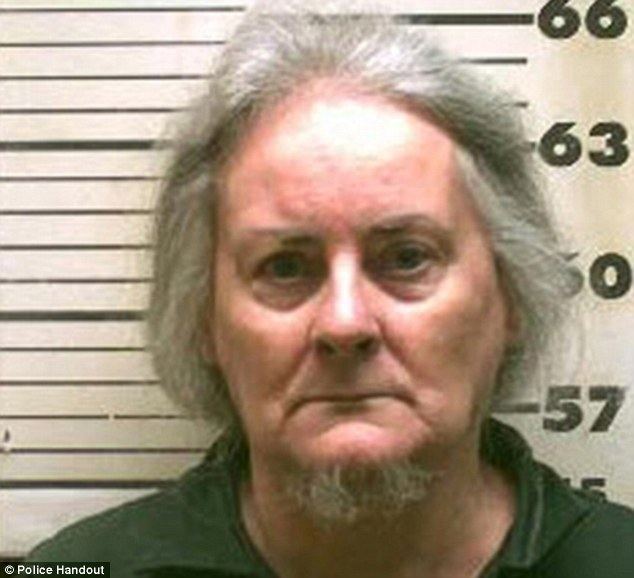Name Dan Mitrione | ||
 | ||
Assassinated August 10, 1970, Montevideo, Uruguay | ||
Tupamaros libro tortura y asesinato de dan mitrione
Daniel Anthony "Dan" Mitrione (August 4, 1920 – August 10, 1970) was an Italian-born American police officer, FBI agent, and U.S. government advisor for the CIA in Latin America. He was killed by the Tupamaros guerilla in Montevideo, Uruguay.
Contents
- Tupamaros libro tortura y asesinato de dan mitrione
- Estado de s tio dan mitrione em montevid u
- Career
- Uruguayan posting and death
- Continuing controversy and diplomatic exchanges
- Commemoration
- In fiction
- References

Estado de s tio dan mitrione em montevid u
Career

Mitrione was a police officer in Richmond, Indiana, from 1945 to 1947 and joined the FBI in 1959. In 1960, he was assigned to the U.S. State Department's International Cooperation Administration, going to South American countries to teach "advanced counterinsurgency techniques." A. J. Langguth, a former New York Times bureau chief in Saigon, claimed that Mitrione was among the U.S. advisers teaching Brazilian police how much electric shock to apply to prisoners without killing them. Langguth also claimed that older police officers were replaced "when the CIA and the U.S. police advisers had turned to harsher measures and sterner men" and that under Mitrione as the new head of the U.S. Public Safety program in Uruguay, the United States "introduced a system of nationwide identification cards, like those in Brazil… [and] torture had become routine at the Montevideo [police] jefatura."

From 1960 to 1967, Mitrione worked with the Brazilian police, first in Belo Horizonte then in Rio de Janeiro. He returned to the U.S. in 1967 to share his experiences and expertise on "counterguerilla warfare" at the Agency for International Development (USAID), in Washington D.C. In 1969, Mitrione moved to Uruguay, again under USAID, to oversee the Office of Public Safety (OPS).

Mitrione was also in the Dominican Republic after the 1965 U.S. intervention.
Uruguayan posting and death
In this period the Uruguayan government, led by the Colorado Party, had its hands full with a collapsing economy, labor and student strikes, and the Tupamaros, a left-wing urban guerilla group. On the other hand, Washington feared a possible victory during the elections of the Frente Amplio, a left-wing coalition, on the model of the victory of the Unidad Popular government in Chile, led by Salvador Allende, in 1970. The OPS had been helping the local police since 1965, providing them with weapons and training. It is claimed that torture had already been practised since the 1960s, but Dan Mitrione was reportedly the man who made it routine.
Former Uruguayan police officials and CIA operatives stated Mitrione had taught torture techniques to Uruguayan police in the cellar of his Montevideo home, including the use of electrical shocks delivered to his victims' mouths and genitals. He also helped train foreign police agents in the United States in the context of the Cold War. It has been alleged that he used homeless people for training purposes, who were executed once they had served their purpose.
As the use of torture allegations grew and the tensions in Uruguay escalated, Mitrione was eventually kidnapped by the Tupamaros on July 31, 1970. They proceeded to interrogate him about his past and the intervention of the U.S. government in Latin American affairs. They also demanded the release of 150 political prisoners.
The Uruguayan government, with U.S. backing, refused, and Mitrione was later found dead in a car, shot twice in the head and with no other visible signs of maltreatment (beyond the fact that during the kidnapping, Mitrione had been shot in one shoulder, a wound that had evidently been treated while in captivity).
In his autobiography (Ambassador Ortiz, Lessons from a Life of Service, Albuquerque, University of New Mexico Press, 2005, p. 106), Frank V. Ortiz whose appointment as Deputy Chief of Mission at the United States Embassy in Montevideo coincided with the kidnapping and killing of Mitrione, wrote: "My first duty, on my first day in Montevideo, was to attend a memorial service for Dan Mitrione, a former state chief of police from New Mexico who headed a U.S. mission to train the Uruguayan police to combat terrorism. Just four days before we [Ortiz and his family] arrived, the Tupamaros had kidnapped Mitrione during a carefully organized operation against American Embassy officials. They also captured the head of the commercial section of the embassy by hitting him on the head, wrapping him in a rug, and tying him down in the back of a pickup. Fortunately, he worked his ties loose and jumped out of the pickup while it was speeding down the road. The terrorists also tried to take the cultural attaché. They jumped him in the garage of his aprtment building, but he honked his car horn, attracting attention and scaring off his would-be captors. But poor Mitrione--they tied him up, tortured him and finally killed him."
Tom Golden, a career army intelligence operative detailed to the CIA and assigned to the U.S. Embassy in Montevideo, was a personal friend of Mitrione who worked closely with Uruguayan officials to try to secure the release of Mitrione and prevent his execution. After Mitrione's death, Golden disputed the torture-training allegations in closed-door testimony to the Senate Intelligence Committee.
In 1987, two years after being released from prison, the leader of the Tupamaros, Raúl Sendic, said in an interview that Mitrione had been selected for kidnapping because he had trained police in riot control, and as retaliation for the deaths of student protestors. He did not mention the accusations of torture. In addition, Sendic also revealed that Mitrione's death was unintended; the Tupamaro leaders had decided to keep Mitrione alive and hold him indefinitely instead of killing him if the government continued to refuse their demands.
However, on August 7, 1970, just a week after the kidnapping, the Uruguayan police raided the house where the Tupamaro leadership was staying and captured Sendic and the others. A short time later, he said, the replacement leadership, which also knew of the plan to keep Mitrione alive, was also captured. "Those captured lost all contact with the others," he said, "and when the deadline came the group that was left with Mitrione did not know what to do. So they decided to carry out the threat."
In spite of Sendic's memories told almost 17 years after the events and after many years' imprisonment, just a few days after Mitrione's funeral a senior Uruguayan police officer, Alejandro Otero, told the Jornal do Brasil that Mitrione had been employed to teach the police to use "violent techniques of torture and repression."
Continuing controversy and diplomatic exchanges
The Mitrione case continued to reverberate within U.S.-Uruguayan relations in 2008, with U.S. Ambassador to Uruguay Frank E. Baxter being involved in high level exchanges about Uruguayan investigations into other crimes committed during the country's civilian-military administration from 1973 until 1985, to which linkages were allegedly perceived.
Commemoration
The Nixon Administration, through spokesman Ron Ziegler, affirmed that Mitrione's "devoted service to the cause of peaceful progress in an orderly world will remain as an example for free men everywhere." His funeral was largely publicised by the U.S. media and was attended by, amongst others, David Eisenhower and Richard Nixon's secretary of state William Rogers.
Frank Sinatra and Jerry Lewis held a benefit concert for his family in Richmond, Indiana.
In fiction
The 1972 movie State of Siege by Costa-Gavras is based on the story of Mitrione's kidnapping. The film was not available for home video in the U.S. in a good-quality edition until late May 2015, when it was issued on standard and Blu-ray DVD by Janus Films/The Criterion Collection.
The kidnapping and the execution of Mitrione are also central to the plot of the novel El color que el infierno me escondiera by Uruguayan author Carlos Martínez Moreno.
